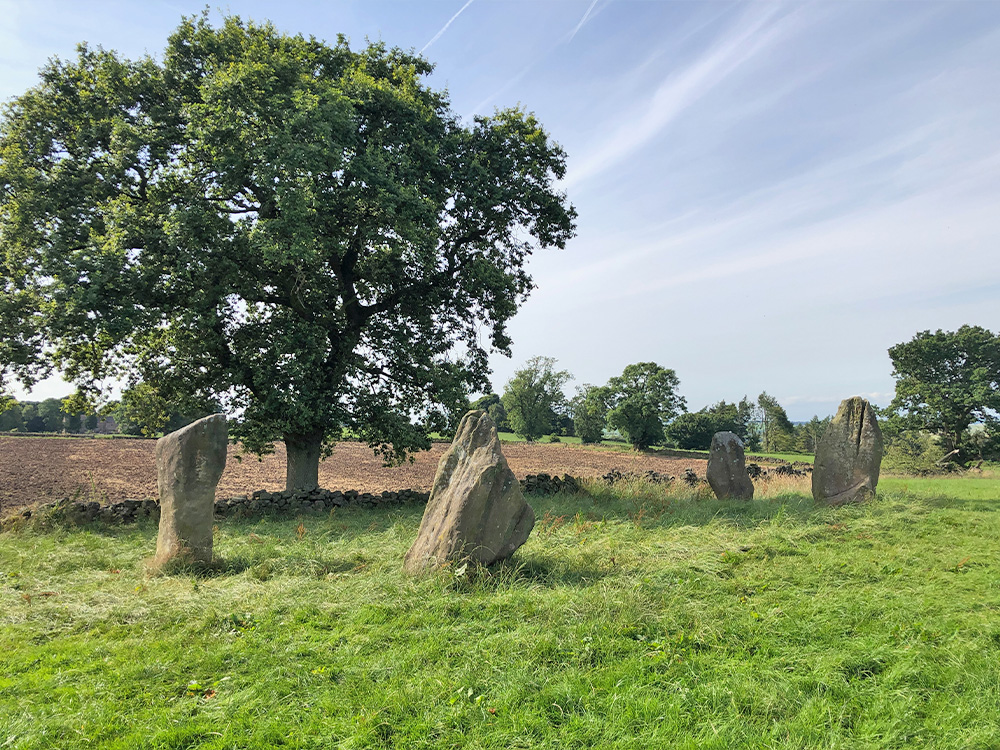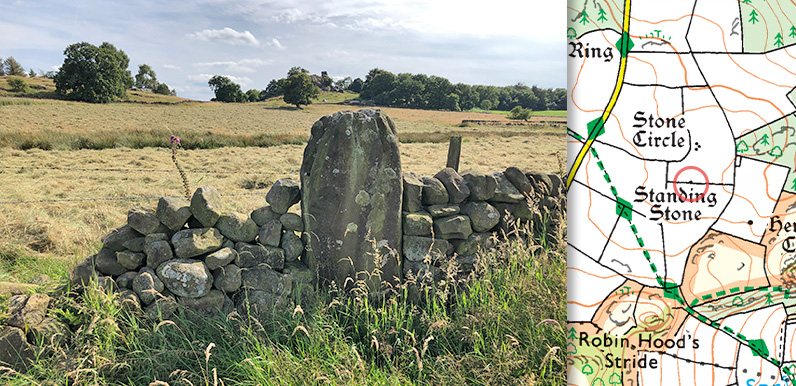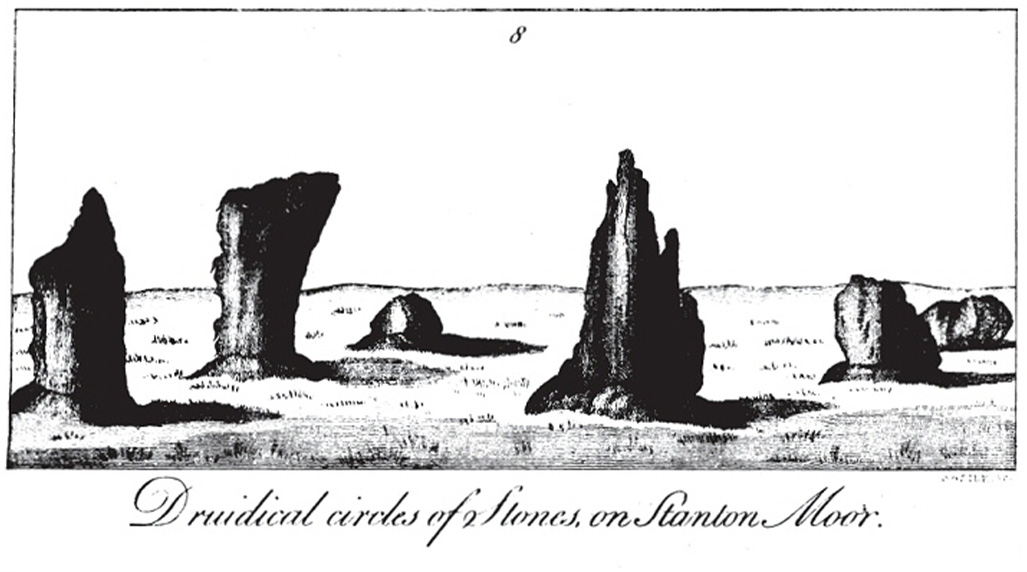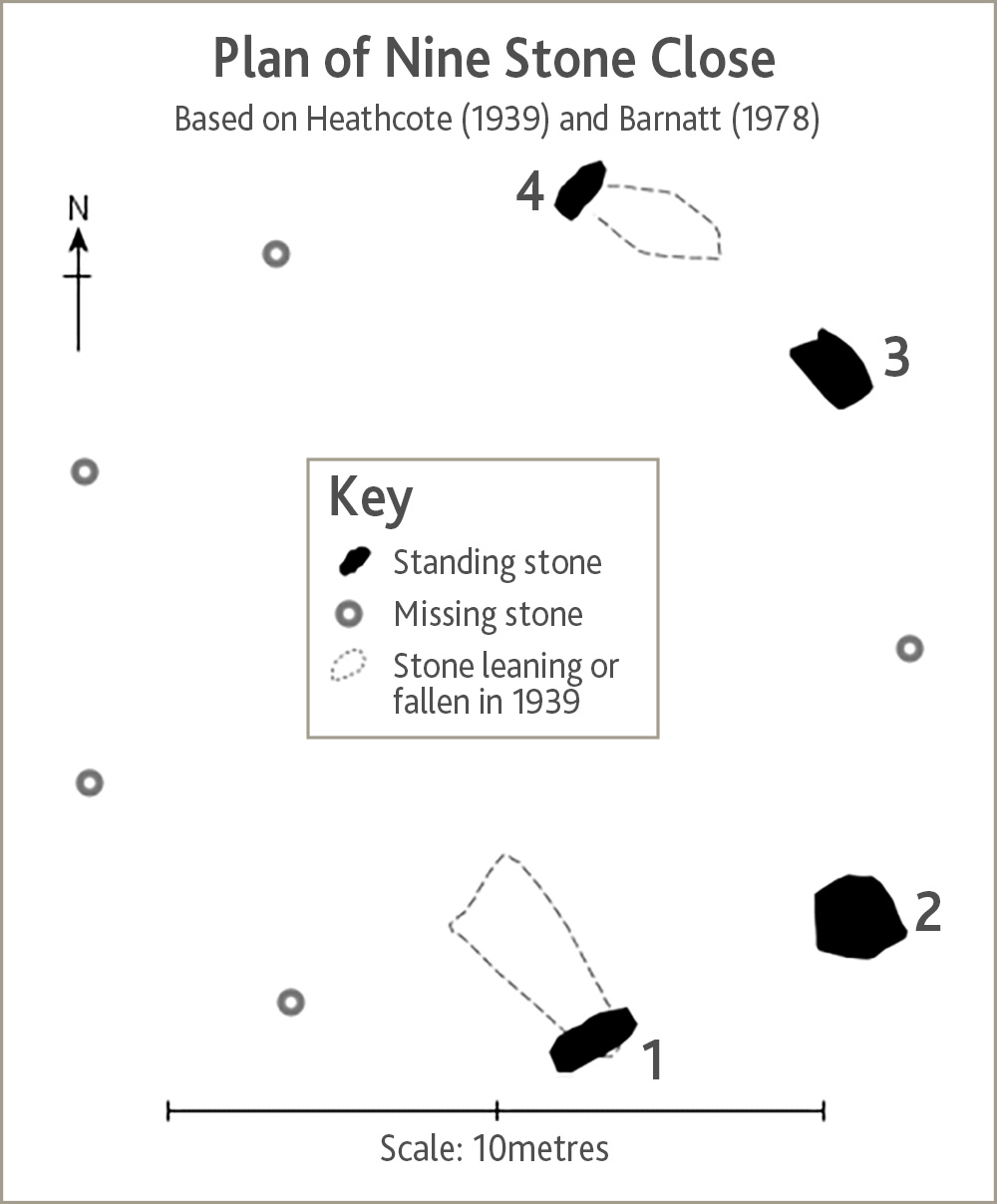Above: The smallest of the surviving Grey Ladies is marked on the OS map and now stands in a nearby wall with Robin Hood’s Stride on the horizon.
Lying close to Robin Hood’s Stride on Harthill Moor, between the villages of Elton and Birchover, The Grey Ladies Stone Circle is one of a number of historically fascinating features along the 14 mile walk from Bakewell.
Standing some 2m above ground, the remaining four stones are the tallest in Derbyshire and date from between the late Stone Age (5,000 years ago) and early Bronze Age (3,000 years ago). The circle measures some 13.7m in diameter.
The circle is also known as ‘Nine Stones Close’. But working out why only four stones remain is a bit of a puzzle. A fifth lies embedded in a nearby wall just a short distance away (see above photo). A slightly confusing page in Wikipedia says that a sixth “prostrate stone lies in a field 230 metres to the north-west”, but I’ve been unable to locate it.
Above: This 1782 illustration shows just six standing stones. But apart from the one second from left, the others don’t match the shapes or sizes of today’s stones. And even the one that does is out of alignment, as the photo below shows. So I think it’s safe to ignore the drawing as an accurate representation.

Above: The 2m high stones are far more impressive than the nearby Seven Ladies Circle, and also attract less visitors, creating a more peaceful and evocative atmosphere.
From nine stones to seven…
The Wikepedia page also includes this information:
…the antiquarian Thomas Bateman in his 1848 book Vestiges of the Antiquities of Derbyshire referred to Nine-stone Close as a “small druidical cirque”. Bateman observed seven stones in the circle and a slight elevation in the centre, “so as to appear as a low tumulus”, suggesting the possibility that this had once been used for burials.
Bateman also commented on the presence of two monoliths standing erect about 80 yards south of the stone circle. In 1847, Bateman had dug at the site, discovering “several fragments of imperfectly baked pottery accompanied by flint both in a natural and calcinated state.”
Which begs the question of whether the other two standing stones could have been removed from the nine to leave the seven Bateman recorded. But it would seem an odd thing to do back in the mists of time. Perhaps it was the work of 18th century proto-druids, such as the Rev Thomas Eyre who created Rowtor Rocks in nearby Birchover.
Above: An updated plan based on a drawing made in 1939 showing the position of the two fallen stones (click to enlarge).
From seven stones to six…
A book published in 1905 reported that the circle possessed “six upright stones of large size”. This could mean that one of the seven had simply fallen over, rather than being removed. In 1936 another of the standing stones had fallen over. Wikipedia reports:
The Derbyshire Archaeological Society decided to re-erect both this stone and another, which they believed had lain largely recumbent for centuries. The two fallen stones were set in concrete bases to keep them upright.
From six stones to four…
The plan (found on this website) identifies the two fallen stones, and also shows there were only four remaining in 1939. So three of the seven stones Bateman recorded in 1848, and also mentioned in the 1905 book, seem to have vanished over just 34 years.
They may well have been quite a lot smaller than the remaining four (if the 1782 illustration is to be believed), so wouldn’t have taken much effort to remove. And most probably broken down to form gateposts, stone walls, or used in the construction of farm buildings.



